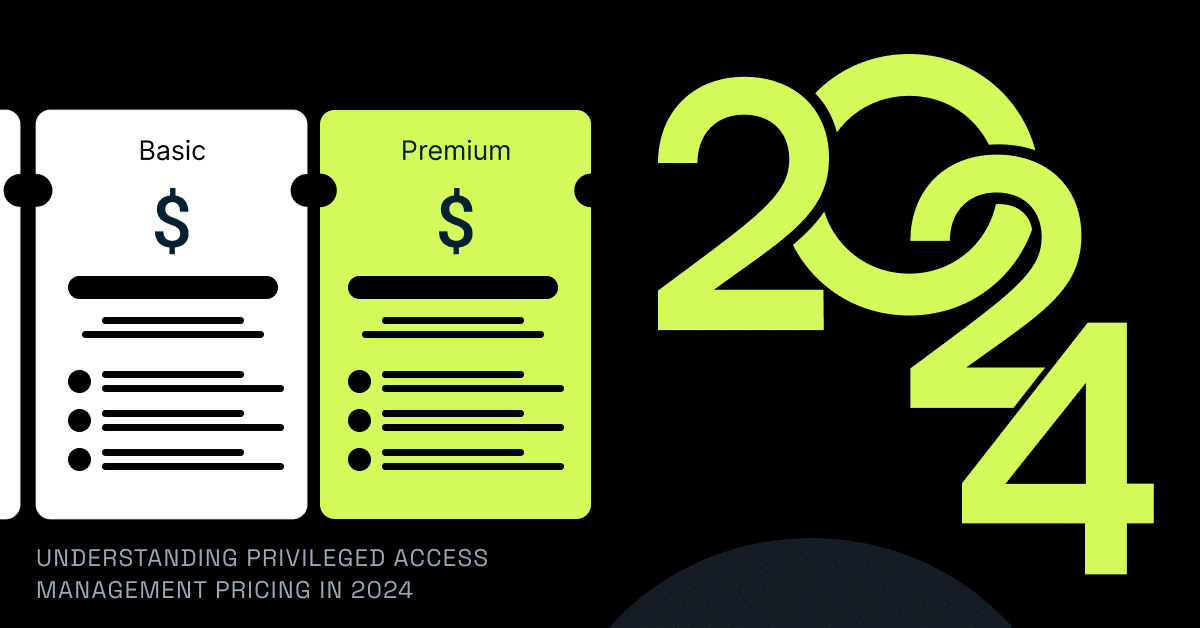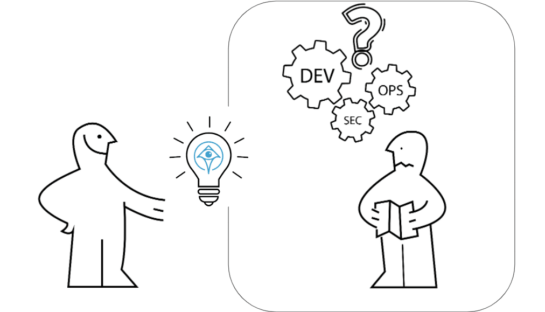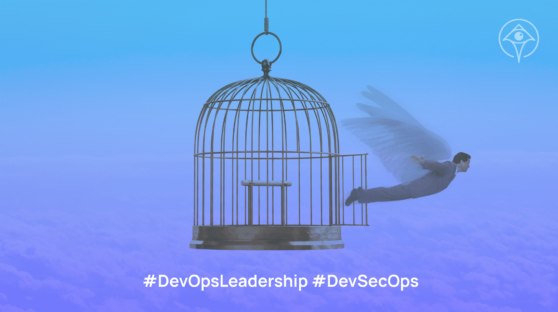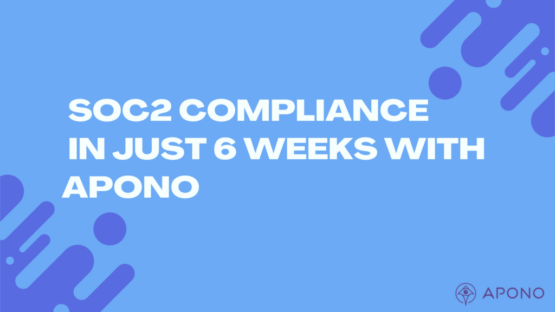Understanding Privileged Access Management Pricing in 2024

Rom Carmel
August 25, 2024

In today’s digital landscape, the threat of data breaches and cyber attacks looms large over organizations of all sizes. As a result, privileged access management (PAM) has become a critical component of cybersecurity strategies. It’s easy to see why. It’s estimated that 80% of security breaches involve privileged credentials, highlighting the importance of investing in robust PAM solutions.
Understanding privileged access management pricing is essential for businesses looking to implement robust security measures while managing their IT budgets effectively. The cost of PAM solutions can vary widely, depending on factors such as the size of the organization, the complexity of its IT infrastructure, and the specific features required.
As we delve into 2024, the PAM market continues to evolve, bringing new pricing models and considerations to the forefront. This article explores current trends in Privileged Access Management pricing, helping organizations evaluate the return on investment of these crucial security tools. We’ll also discuss strategies to budget for PAM solutions effectively, taking into account both immediate costs and long-term value.
Why you need Privileged Access in the Cloud
A whopping 94 percent of enterprises report they are using cloud services, today, and 75 percent say security is a top concern.
01. Agility
Agile development has created a world where the environment is changing on an hourly basis as organizations push new code to production and create new cloud instances all the time. With that, access to support customers, fix bugs, and do production maintenance is required more often. In addition, it’s not just IT teams that manage access to different systems, but also DevOps and the engineers themselves that need to have a deep understanding and strong capabilities in each new cloud, app and service.
02. Scale
A third of enterprises spend at least $12 million annually on the public cloud, which translates to huge cloud environments. In addition, 92 percent of organizations use at least two clouds, as multi-cloud is becoming the leading approach. This means more access to manage, with new environments, services and apps being spun up all the time. AWS alone has a whopping 200 cloud services, and a real cloud environment can have tens of thousands of instances for each one. It’s harder than ever for the business to keep up, let alone manage access among so many cloud providers, services, instances, humans and machines.
03. Regulatory Compliance
Stricter regulations make it more complex to manage access. Regulatory bodies and industry standards are placing greater emphasis on the need to control and monitor privileged access. Compliance frameworks like GDPR, HIPAA, and PCI-DSS require organizations to implement measures to ensure that only authorized personnel can access sensitive data, and most tech vendors today must also comply with SOC2 and other voluntary standards that enable business.
04. Auditing and Accountability
Privileged access solutions often provide auditing and reporting capabilities. This is crucial for demonstrating compliance, conducting post- incident analysis, and maintaining accountability for privileged access activities.
05. Rising Cybersecurity Threats
Cybersecurity threats, including data breaches, ransomware attacks, and insider threats, have been on the rise. Attackers often target privileged accounts because they provide them with the highest level of access and control within an organization’s IT infrastructure. Proper PAG helps to mitigate the risks associated with unauthorized access to sensitive systems and data.
Where Regular PAM falls short
Not all solutions are created equally. Before we discuss what is needed in a modern, secure solution for cloud-native applications, let’s look at why traditional PAM solutions fall short.
Long and complex implementation
Implementing PAM solutions can be complex and time-consuming. Integration with existing IT systems and applications can be challenging. Managing and configuring PAM solutions can require specialized skills and knowledge, which may not be readily available in all organizations. In many cases, a PAM specialist, internal or external, needs to step in.
Drastic changes to end-user workflows
PAM solutions often require end users to change the way they access systems and applications. Training and change management are crucial to ensure that users understand and adopt new processes.
Changes to Applications
Some applications may need to be modified or reconfigured to work with PAM solutions, including changing authentication mechanisms, modifying application code, or updating APIs, all of which can introduce security risks or impact to mission-
Lack of granularity
Many PAM solutions do not integrate directly with newer systems and applications, limiting their ability to secure access at a granular level. Instead of securing specific resources within an application, they may only be able to secure the entire application, leading to rampant over privileges.
No unified control plane (poor visibility)
PAM solutions require patchwork to implement, complicating the management and monitoring of access policies, suspicious activity, and compliance with security policies and regulations.
Privileged Access Management Pricing Trends in 2024
Once you’ve finished evaluating the different features among PAM tools, it’s time to take a look at the pricing market. The Privileged Access Management (PAM) market is experiencing significant growth, with projections indicating a strong compound annual growth rate (CAGR) percent from 2024 to 2031. This expansion is driven by rising cyber threats, compliance requirements, and increased awareness of insider threats. As organizations adapt to these challenges, several key pricing trends have emerged in the PAM landscape.
Shift to Subscription Models
Many PAM vendors are moving towards subscription-based pricing models. For instance, several popular tools, such as Apono, offer a per-user pricing structure, which includes support for all resource types. This shift allows for more predictable budgeting and scalability for organizations.
Cloud vs On-Premise Pricing
The choice between cloud and on-premise solutions significantly impacts pricing. While cloud-based PAM offers flexibility and ease of deployment, on-premise solutions provide greater control over data and infrastructure. Some vendors offer hybrid models, combining aspects of both deployment options to cater to specific security and operational requirements.
Industry-Specific Pricing
PAM vendors are increasingly tailoring their pricing strategies to specific industries. This trend recognizes that different sectors have unique security needs and compliance requirements. For example, healthcare, finance, and government organizations may require more specialized PAM solutions, which can impact pricing structures.
Evaluating PAM ROI
Security Risk Reduction
Implementing PAM solutions significantly reduces the risk of data breaches and cyber attacks. By controlling and monitoring privileged access, organizations can shrink their attack surface. This proactive approach helps prevent unauthorized access to critical systems and sensitive information. The IBM Security report reveals that the average cost of a data breach is $5.17 million.
Compliance Cost Savings
PAM plays a crucial role in meeting regulatory requirements such as PCI DSS, HIPAA, SOX, and GDPR. By providing robust access controls and detailed audit trails, PAM solutions help organizations avoid non-compliance fines and associated costs. This not only ensures adherence to industry standards but also instills trust among customers and stakeholders.
Operational Efficiency Gains
PAM solutions streamline access management processes, reducing administrative burden and improving workflow efficiency. Automation of privileged access management tasks, such as password rotation and access provisioning, can save significant time for IT staff. For instance, redirecting 5 weeks of an IT administrator’s time to value-creating activities can yield a positive ROI.
Calculating Total ROI
To calculate the total ROI of PAM implementation, organizations should consider:
- Reduced risk of security breaches and associated costs
- Savings from avoided non-compliance fines
- Improved operational efficiency and reduced labor costs
- Enhanced productivity through streamlined access management
By factoring in these elements, businesses can determine the long-term value and cost-effectiveness of their PAM investment.
Budgeting for PAM Solutions
Assessing Current Security Spend
Organizations must evaluate their existing security expenditure before allocating funds for PAM. This assessment helps identify areas where PAM can enhance overall security posture and potentially reduce costs. Companies should consider the financial impact of potential data breaches, which average $4.88 million globally. By implementing PAM, organizations can lower their risk of advanced threats by 50%.
Determining PAM Budget
When calculating PAM costs, consider product licensing, maintenance, deployment, and training expenses. Factor in the choice between comprehensive and piecemeal implementations, as the latter may incur additional integration costs. Cloud-based solutions can offer predictable budgeting and scalability.
Justifying PAM Investment
To justify PAM investment, focus on potential cost savings and risk reduction. PAM can lead to significant productivity improvements for DevOps and Engineering teams. Additionally, security teams can save $623,000 annually through reduced incident response and audit costs.
Long-Term Budget Planning
For long-term budget planning, consider the total cost of ownership (TCO) and return on investment (ROI). Factor in ongoing maintenance costs, which can be lower for appliance-based solutions. Plan for potential infrastructure cost avoidance and productivity improvements. The combined ROI for DevOps/Engineering and Security teams can reach $816,000 annually, making PAM a valuable long-term investment.
Conclusion
Privileged Access Management has become a cornerstone of modern cybersecurity strategies, with its pricing models evolving to meet the changing needs of organizations. The shift towards subscription-based models, the impact of cloud vs. on-premise solutions, and the emergence of industry-specific pricing are shaping the PAM landscape in 2024. These trends have a significant influence on how businesses approach their security investments and budget planning.
To make the most of PAM solutions, organizations need to carefully evaluate the return on investment by considering factors such as security risk reduction, compliance cost savings, and operational efficiency gains. By taking a holistic approach to budgeting for PAM, businesses can ensure they’re not just investing in a security tool, but in a comprehensive strategy to protect their most valuable assets. This approach allows companies to stay ahead of cyber threats while managing costs effectively in an ever-changing digital landscape.





